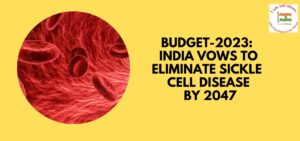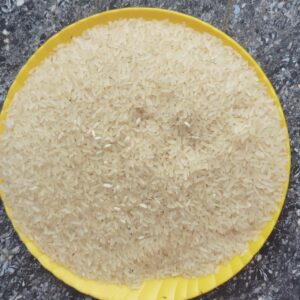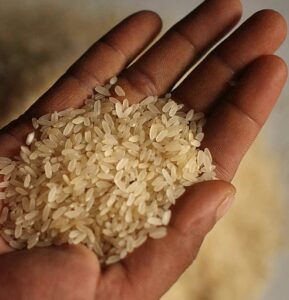When dietary needs vary from person to person within a single household, how can Kerala justify serving a one-size-fits-all meal to every child, especially when it involves something as sensitive and medically debated as fortified rice?
Published Jun 26, 2025 | 12:18 PM ⚊ Updated Jun 27, 2025 | 11:32 AM

Behind these colourful plates lurks a serious public health question, Is fortified rice safe for everyone?
Synopsis: Fried rice, biryani, pulao…the menu for the mid-day meal scheme in Kerala schools looks impressive. However, the state government’s move to provide fortified rice to children has raised many eyebrows: Is the food safe?
From microgreens and pulses to dishes prepared with fortified rice, Kerala’s revamped mid-day meal menu for schoolchildren looks like a progressive leap towards nutrition equity. But behind these colourful plates lurks a serious public health question: Is fortified rice safe for everyone?
Despite national warnings, scientific red flags, and known risks for children with conditions like thalassemia and sickle cell anaemia, both prevalent in Kerala’s tribal belts, the state has embraced a policy that mirrors Prime Minister Narendra Modi’s much-debated 2021 announcement that over half of India’s population would be fed rice fortified with micronutrients by 2024 as a step towards eradicating anaemia.
The question remains: When dietary needs vary from person to person within a single household, how can Kerala justify serving a one-size-fits-all meal to every child, especially when it involves something as sensitive and medically debated as fortified rice?
Kerala began actively debating safety warnings linked to fortified rice after Wayanad-based organic farmer, Rajesh Krishnan, an office-bearer of the Thirunelly Farmers Producer Federation, filed an affidavit in the Supreme Court.
Speaking to South First, Krishnan questioned the government’s decision to remove mandatory warning labels on iron-fortified rice distributed through public welfare schemes.
”We have a right to know why the warning was removed,” he said. ”It violates the rights of vulnerable groups, especially people with thalassemia and sickle cell disease.”
The original warning, based on Food Safety and Standards Authority of India (FSSAI)’s scientific panel recommendations in August 2021, said, ”People with thalassemia may take under medical supervision, and persons with sickle cell anaemia are advised not to consume iron-fortified food products.”
“Fortification,” according to FSSAI, “means deliberately increasing the content of essential micronutrients in a food to improve the nutritional quality of food and to provide public health benefit with minimal health risk; Fortification is a scientifically proven, cost-effective, scalable and sustainable global intervention that addresses the issue of micronutrient deficiencies.”
Krishnan alleged that the FSSAI misused emergency powers under Section 18(2)(d) to remove the label without public consultation — a process meant only for genuine public health emergencies.
He pointed out that several expert bodies, including NITI Aayog, WHO, and ICMR-NIN, had raised safety concerns and advised retaining the warning. A NITI Aayog assessment even revealed serious quality control lapses, such as non-uniform blending of fortified kernels, causing dangerous variations in iron content.
Krishnan warned that ignoring these concerns could endanger thousands of people from tribal and marginalised communities, violating their constitutional and medical rights.
Sickle cell disease, a genetic condition affecting red blood cells, is prevalent in tropical and subtropical regions, impacting individuals from infancy to adulthood.

Health Minister Veena George inaugurated a year-long campaign in the second week of June to increase awareness about sickle cell anaemia.
India has the second-highest number of cases globally, with over two crore patients, according to the Indian Journal of Medical Research. Despite being one of the most common inherited disorders, it remains a major public health challenge, especially in tribal and non-tribal populations across the country’s sickle cell belt.
Every year, around 1.5 to 2 lakh children in India are born with the disease. Recognising its severity, Union Finance Minister Nirmala Sitharaman, in the 2023 Budget, announced Mission 2047, aiming to eliminate sickle cell disease, with a special focus on tribal communities.
In June second week, Kerala’s Health Department, with the Scheduled Tribe Development Department, launched a year-long campaign, “Let’s Know and Prevent Sickle Cell Disease”, to raise awareness on sickle cell anemia.

The Indian Organisation for Rare Diseases led the campaign based on Nirmala Sitharaman’s promise that the government would work towards eliminating sickle cell disease by 2047.
Kerala Health Minister Veena George inaugurated the drive targeting tribal patients, pregnant women, and children. Screening camps are underway, and after Nilambur and Attappady, the project will expand to Kannur, Kasaragod, and Idukki.
Dr P Dineesh, the Wayanad District Medical Officer, told South First that the district has over 1,200 sickle cell anaemia patients, with the majority hailing from the Sulthan Bathery taluk. The cases include both men and women in almost equal numbers.
Dr Ammini K, a social activist from the Vettakuruma tribal community in Wayanad, raised concerns about the use of fortified rice distributed through ration shops.

Fortified rice distributed in Wayanad’s tribal belt.(Pic: Dr. Ammini K)
”We collect the rice and then remove the fortified grains before cooking. People here are unsure how this iron-fortified rice might affect their health. But in schools, children don’t get that choice—they have to eat whatever is served,” she told South First.
Dr Ammini also pointed out that, since sickle cell anaemia is a genetic disorder, many affected families hesitate to speak openly about the challenges they face.
”The government is encouraging people without sickle cell disease to marry those with the condition, as a preventive strategy to stop passing it on to future generations,” she added.
While the Indian medical community remained divided on the suitability of iron supplementation for people with sickle cell anemia, the US National Institutes of Health (NIH) has flagged the risks. According to NIH, both iron deficiency and iron overload can worsen the clinical condition of sickle cell patients. It stressed the need for carefully regulating iron levels to avoid further complications.
Bengaluru-based Kavitha Kuruganti, National Convenor of the Alliance for Sustainable and Holistic Agriculture (ASHA), and one of the few researchers in India to lead fact-finding studies on fortified rice distribution, lamented what she termed “policy drama”.

Ration rice mixed with fortified rice.
”The current Food Safety Authority rules require a warning label on all iron-fortified foods, cautioning thalassemia and sickle cell anaemia patients. But after Rajesh Krishnan filed a PIL, the Ministry of Consumer Affairs argued that such labels aren’t needed. Now, the Centre is moving to repeal the regulation and withdraw warning labels. That’s the policy drama,” she told South First.
“Scientifically, the government says the iron dosage is too low to harm vulnerable groups. But if it’s too low to harm, how will it tackle anemia?”
She said India’s anaemia crisis was largely not due to iron deficiency but linked to issues like excessive bleeding. The policy wrongly assumed iron deficiency as the main cause. “What India needs is dietary diversity, not artificial iron through fortified rice.”
“Our fact-finding efforts showed that women in villages are separating fortified kernels from regular rice. The fortified rice programme is either unsafe or ineffective. It can’t be both. We believe this is largely driven by lobby groups like the Bill and Melinda Gates Foundation (BMGF),” she alleged.
Even adults don’t have the option to choose what to consume, so how could children in schools decide? “They are simply served cooked food. In such a situation, what is the point of talking about the right to choose or the right to know?” Dr Kuruganti asked.
A senior Union Consumer Affairs source told South First that the study on fortified rice’s impact on anaemia, conducted by Tata Trusts and funded by BMGF, raised conflict of interest concerns.
Jai Sreekumar, an anthropologist from Kerala, said the burden of proof was on the government.

Millet Village, Attappady.
“The burden of proof belongs to the government. They have to ensure that studies were conducted before introducing such policy reforms, especially those linked to children’s health. We agree that it’s not possible to choose each small food item in a large-scale policy like this. But when introducing a common plan, proper consultation is essential—especially with vulnerable communities,” he told South First.
He also pointed to the Kerala government’s Millet Village Project in Attappady as an example of poor policy planning. He noted that tribal communities like the Irular, Kurumbar, and Mudugar in Attappady have deep knowledge of millet cultivation and have been growing it for decades.
“When the government launched the project to address infant mortality (which is already low in Kerala compared to other states), they insisted on monocropping and completely ignored local seed varieties,” Sreekumar said.
“Traditionally, these communities grew more than five crop varieties to ensure harvests in every season. But the project failed to include their suggestions and concerns. Such top-down approaches won’t do any good.”
Sreekumar also pointed out that Kerala has not recognised the importance of anthropology in shaping such critical food and health policies.
When South First contacted Salini SR, a nutritionist who was part of the expert committee on Kerala’s Midday Meal Scheme, and asked whether the government conducted any study before including fortified rice in the meal plan, she said,
“As this subject seems strictly official, it might be better to answer this if our higher authorities permit us to do so.”
Suma Vishnudas, Head of Food Systems Research at the Hume Centre for Ecology and Wildlife Biology, highlighted concerns from Wayanad. “For the past two years, iron-fortified rice has been distributed through ration shops here as a test dose. The region includes many tribal communities. We are a population where not everyone is anaemic. How can you compel people to consume iron-fortified rice?” she asked while speaking to South First.
“The bigger question is—do the rights of vulnerable communities have no voice in this country?” It is a question that begs an answer.
(Edited by Majnu Babu).
